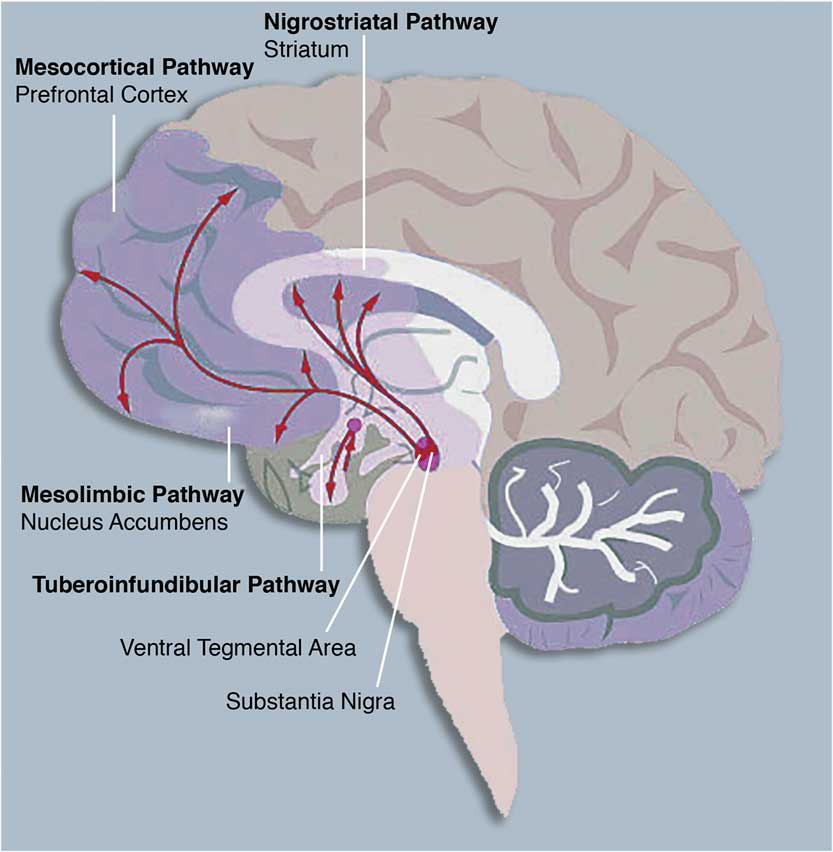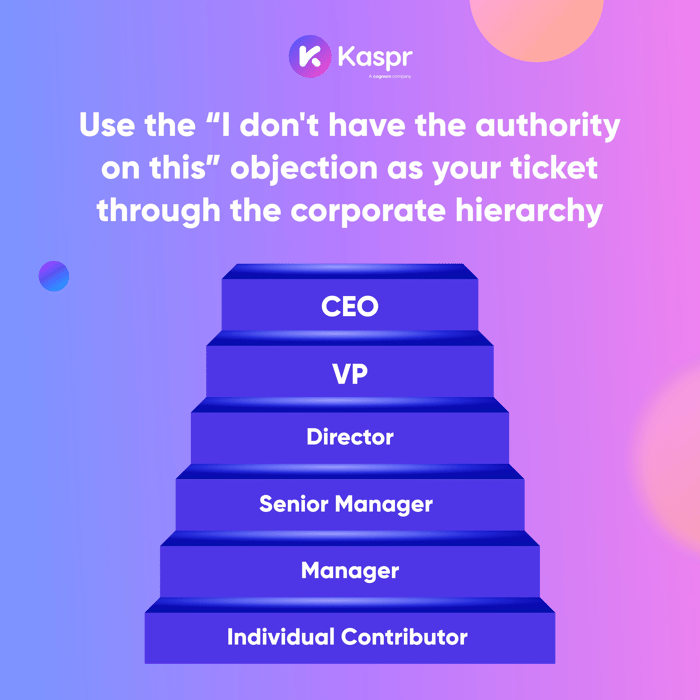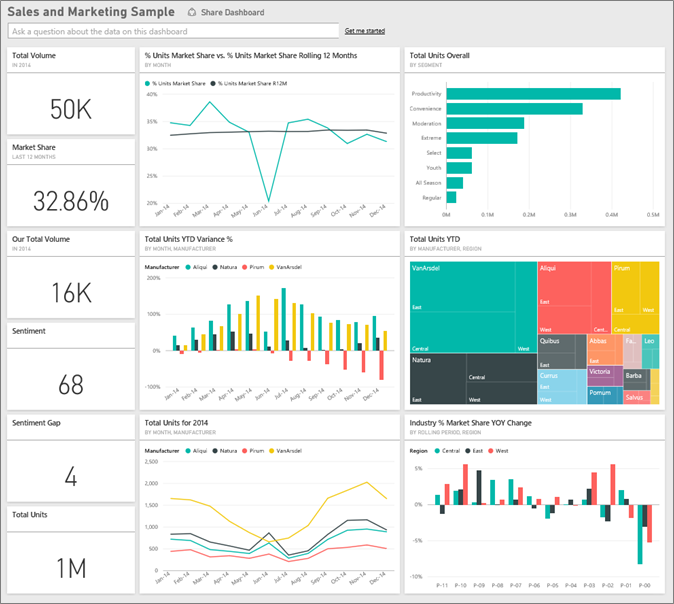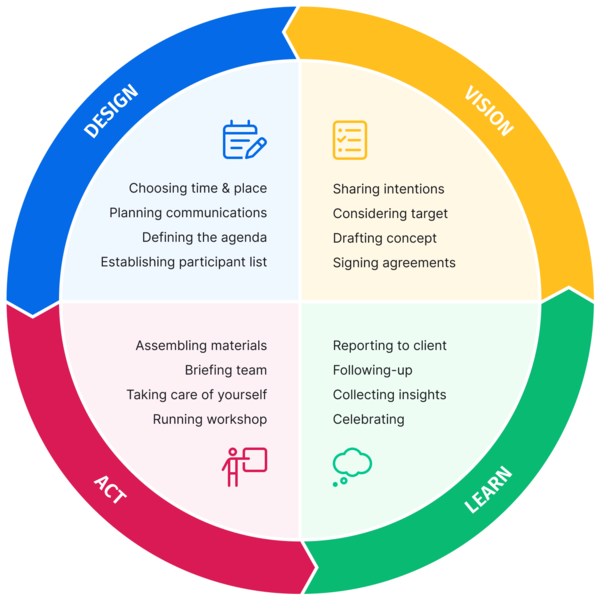The Art of Yes Ladders: Building Momentum to Overcome Sales Objections
Transform potential rejections into sales opportunities through strategic agreement patterns
In my years of sales experience, I've discovered that the most effective way to overcome objections isn't through confrontation but through building momentum. Yes ladders represent one of the most powerful psychological techniques in a salesperson's toolkit—creating a pattern of agreement that naturally leads prospects toward closing.
Throughout this guide, I'll share how I've personally implemented yes ladder techniques to transform challenging sales conversations into successful closings, and how you can use the same approach to boost your conversion rates while building stronger relationships with prospects.
Understanding the Psychology Behind Yes Ladders
When I first learned about yes ladders, I was fascinated by their psychological foundation. At their core, these techniques leverage what psychologists call the principle of commitment and consistency—our natural desire to remain consistent with what we've already agreed to.

I've observed that each time a prospect says "yes" to a question—even a small, inconsequential one—they're establishing a pattern of agreement that becomes increasingly difficult to break. This is because each affirmative response triggers a small dopamine release in the brain, creating positive associations with the conversation.
Traditional objection handling often fails because it creates a confrontational dynamic: the prospect raises an issue, and the salesperson counters it. In my experience, this approach frequently leads to defensiveness rather than progress. Yes ladders flip this dynamic by building momentum through agreement before addressing potential objections.
The Psychology of Agreement vs. Confrontation
Comparing conversion rates between traditional objection handling and yes ladder techniques
In my own sales practice, I've seen how yes ladders transform potential rejections into opportunities for deeper engagement. When a prospect has already agreed to several points, they become psychologically invested in maintaining consistency, making them more receptive to addressing concerns constructively rather than simply walking away.
Constructing Your First Yes Ladder
When I build a yes ladder, I always start with identifying low-stakes questions that are virtually guaranteed to receive affirmative responses. These act as the foundation of the ladder and establish the pattern of agreement.
Yes Ladder Structure
A visualization of the progression from simple to substantive agreements
flowchart TD
A[Start: Simple Fact Agreement] -->|"Yes"| B[Observable Situation Agreement]
B -->|"Yes"| C[Problem Recognition]
C -->|"Yes"| D[Solution Value Agreement]
D -->|"Yes"| E[Specific Benefit Agreement]
E -->|"Yes"| F[Action Commitment]
style A fill:#FFECB3,stroke:#FF8000
style B fill:#FFECB3,stroke:#FF8000
style C fill:#FFD54F,stroke:#FF8000
style D fill:#FFD54F,stroke:#FF8000
style E fill:#FFC107,stroke:#FF8000
style F fill:#FFA000,stroke:#FF8000,stroke-width:3px
I've found that thorough prospect research is essential for crafting personalized, relevant questions that resonate. When I take the time to understand a prospect's business, industry challenges, and personal preferences, I can create questions that feel natural while guiding them toward my desired outcome.
Example Yes Ladder Sequence
- Simple Fact: "Your team has been using the same CRM system for about three years now, right?"
- Observable Situation: "And you mentioned that your sales team has grown by 30% in the last year?"
- Problem Recognition: "With that growth, I imagine you're facing some challenges with scaling your current processes?"
- Solution Value: "Would more automated reporting save your managers valuable time each week?"
- Specific Benefit: "If you could reclaim 5 hours per manager each week through automation, would that help address your scaling challenges?"
- Action Commitment: "Would it make sense to schedule a demo next week to see exactly how these automations would work for your specific team structure?"
The key to a successful yes ladder is creating a natural flow between questions. I make sure each question builds logically from the previous one, maintaining conversational authenticity. Nothing kills momentum faster than a question that feels forced or disconnected from the conversation flow.
To visualize and plan my yes ladder structures, I use PageOn.ai's AI Blocks feature. This allows me to map the progression of questions and anticipate potential response paths, ensuring I'm prepared for various conversation directions while maintaining the momentum of agreement.
Strategic Application of Yes Ladders for Common Sales Objections
In my sales career, I've encountered countless objections, but I've learned that specific yes ladder structures can effectively address each common type. Let me share how I approach these challenging scenarios.

Addressing Price Concerns
When I encounter price objections, I never dive straight into discussing discounts. Instead, I build value perception first through a carefully structured yes ladder:
- "Would you agree that employee productivity is a key factor in your business's profitability?" (Value foundation)
- "Have you found that your current solution requires staff to perform manual processes that could be automated?" (Problem agreement)
- "If these manual processes were eliminated, would that free up at least 10 hours per week across your team?" (Benefit recognition)
- "At your average billing rate, would those 10 hours represent at least $X in potential revenue per week?" (ROI framework)
- "If our solution could deliver that $X weekly value while costing less than half that amount, would that be a worthwhile investment?" (Value comparison)
Handling "Need to Think About It"
When prospects tell me they need time to think, I use time-focused agreement ladders to create urgency without pressure:
- "Would you agree that implementing a new solution before your busy season would be ideal?" (Timing agreement)
- "Based on what you've shared, does it seem like our solution addresses your core challenges?" (Solution fit confirmation)
- "Would having this implemented within the next 30 days positively impact your Q4 targets?" (Outcome agreement)
- "If we could guarantee implementation before your busy season, would that timeline work for you?" (Urgency creation)
Objection Response Effectiveness
Comparing traditional versus yes ladder approaches to common objections
Navigating Competitive Comparisons
When prospects mention competitors, I establish agreed-upon evaluation criteria through yes ladders rather than directly criticizing the competition:
- "Would you agree that implementation time is a critical factor in your decision?" (Criteria agreement)
- "Is ongoing support availability important to your team's success?" (Value priority)
- "Based on your specific needs, would you say that customization capabilities are more important than out-of-box features?" (Preference clarification)
- "If we could demonstrate superior performance in these three areas, would that make us a stronger candidate for your business?" (Evaluation framework)
To stay ahead of industry-specific objection patterns and develop effective responses, I use PageOn.ai's Deep Search functionality. This helps me identify emerging concerns in my market and prepare yes ladder sequences that address these specific issues before they become roadblocks in my sales conversations.
The Momentum Principle in Yes Ladders
In my experience, the power of yes ladders lies in their ability to create and sustain psychological momentum. I've found that timing and pacing are crucial elements that can make or break this momentum.
Momentum Building Process
Visualization of how momentum builds through successive agreements
graph LR
A[Initial Agreement] --> B[Confidence Builds]
B --> C[Psychological Investment]
C --> D[Pattern Recognition]
D --> E[Consistency Bias]
E --> F[Reduced Resistance]
F --> G[Final Agreement]
style A fill:#FFF9C4,stroke:#FF8000
style B fill:#FFF59D,stroke:#FF8000
style C fill:#FFF176,stroke:#FF8000
style D fill:#FFEE58,stroke:#FF8000
style E fill:#FFEB3B,stroke:#FF8000
style F fill:#FDD835,stroke:#FF8000
style G fill:#FFC107,stroke:#FF8000,stroke-width:3px
I maintain an optimal rhythm between questions by being highly attentive to the prospect's responses. If I sense they're engaged and responsive, I'll maintain a steady pace. If I detect hesitation, I'll slow down and add more context before the next agreement question.
Recovering from Broken Yes Chains
Even the best yes ladders can break when a prospect unexpectedly says "no." When this happens, I don't panic. Instead, I use what I call the "step back and redirect" approach:
Recovery Technique Example
Prospect: "No, I don't think we need that level of reporting capability."
My Response: "I appreciate your perspective on that. Let's take a step back. Would you agree that having visibility into your team's key performance metrics is important, even if the specific reporting format might vary?"
This acknowledges their "no" while finding new common ground to restart the yes chain.
Building urgency is another critical aspect of maintaining momentum. I strategically place time-sensitive agreement questions at key points in my yes ladder:
- "Would you agree that implementing before your busy season starts in six weeks would be ideal?"
- "If we could guarantee the special pricing through the end of this month, would that timing work with your decision process?"
- "Would having this solution in place before your board meeting next quarter help you demonstrate progress on your strategic initiatives?"
To help my team understand these momentum-building techniques, I use PageOn.ai's visualization tools to create clear, engaging representations of how momentum develops through a well-crafted yes ladder. These visual aids have been instrumental in training new team members to recognize and leverage psychological momentum in their own sales conversations.
Active Listening as a Yes Ladder Foundation
I've learned that the most effective yes ladders aren't scripted in advance—they're built on a foundation of genuine active listening. By truly understanding my prospect's concerns, I can craft questions that address their specific situation.

Identifying Underlying Concerns
When a prospect raises an objection, I use these active listening techniques to identify the real concern behind their words:
- Clarifying questions: "When you say it's too expensive, is that about the initial investment or concerns about long-term ROI?"
- Reflective listening: "It sounds like you're concerned about how this would integrate with your existing workflow. Is that right?"
- Open-ended exploration: "Tell me more about what aspects of implementation are most concerning to you."
Once I understand the real concern, I can build a yes ladder specifically designed to address it. This targeted approach is far more effective than generic objection handling scripts.
Active Listening Impact on Sales Conversion
Comparing conversion rates with different listening approaches
Empathetic Questioning
I've found that showing genuine understanding while guiding toward agreement creates a powerful connection with prospects. I use phrases like:
- "Based on what you've shared about your team's challenges, would you agree that..."
- "Many of our clients have expressed similar concerns about X. Have you also found that to be a pain point?"
- "I understand your hesitation about the implementation timeline. Would it help if we could guarantee..."
To continuously improve my approach, I document customer insights and objection patterns using PageOn.ai. This helps me identify trends and refine my yes ladder strategies over time, ensuring I'm always addressing the most relevant concerns in the most effective way.
Integrating Yes Ladders into Your Sales Strategy
I've learned that yes ladders aren't just a tactical tool—they should be a core component of your overall strategic sales plan. Let me share how I integrate these techniques across different stages of the sales process.
Yes Ladder Integration Across Sales Stages
How yes ladders can be deployed at each stage of the sales process
flowchart TD
A[Prospecting] -->|Initial Contact| B[Discovery]
B -->|Needs Analysis| C[Solution Presentation]
C -->|Objection Handling| D[Negotiation]
D -->|Closing| E[Follow-up]
A1[Simple Agreement Questions] --> A
A2[Research Confirmation] --> A
B1[Problem Recognition] --> B
B2[Pain Point Agreement] --> B
B3[Value Priority Ladders] --> B
C1[Feature Value Ladders] --> C
C2[Benefit Confirmation] --> C
C3[ROI Agreement] --> C
D1[Value Reinforcement] --> D
D2[Timeline Agreement] --> D
D3[Implementation Ladders] --> D
E1[Satisfaction Confirmation] --> E
E2[Expansion Opportunity] --> E
style A fill:#FFF9C4,stroke:#FF8000
style B fill:#FFEE58,stroke:#FF8000
style C fill:#FDD835,stroke:#FF8000
style D fill:#FFC107,stroke:#FF8000
style E fill:#FF8F00,stroke:#FF8000
I adapt my yes ladder techniques for different communication channels. For example:
| Channel | Yes Ladder Adaptation | Example |
|---|---|---|
| Phone | Verbal pacing, tone modulation, direct questions | "Based on what we've discussed, would you agree that X is a priority for your team?" |
| Sequential agreements across multiple touchpoints | "If I understand correctly from our last exchange, your team needs X. Is that right?" | |
| In-person | Visual aids, body language reinforcement | Using whiteboard to map agreed-upon pain points while nodding |
| Video | Screen sharing, visual yes ladders, digital annotations | Highlighting agreed points in shared document as conversation progresses |
To ensure consistent application across my sales organization, I've created team frameworks for yes ladder implementation. These include:
- Standard yes ladder sequences for common objection types
- Industry-specific agreement pathways
- Qualification frameworks built around progressive agreements
- Discovery call templates with embedded yes ladder structures

Measuring effectiveness is crucial to refining your approach. I track these key metrics to gauge the impact of yes ladder techniques:
- Objection-to-close conversion rate
- Average number of touchpoints to close
- Sales cycle duration
- Specific objection resolution success rates
To ensure consistent messaging across all touchpoints, I use PageOn.ai's Vibe Creation feature. This helps my team maintain a unified approach to building agreement momentum, whether they're sending follow-up emails, conducting discovery calls, or presenting solutions.
Advanced Yes Ladder Techniques
Once you've mastered the basics of yes ladders, I encourage you to explore these advanced techniques that I've found particularly effective in complex sales situations.
The Embedded Agreement
One of my favorite advanced techniques is the embedded agreement, where I hide yes questions within seemingly neutral statements:
Embedded Agreement Examples
- Instead of: "Do you want to improve team efficiency?"
- I say: "As someone who values team efficiency, you'd probably be interested in how our clients have reduced meeting time by 30%."
- Hidden agreement: The prospect mentally agrees they value efficiency without explicitly being asked.
Future-Pacing
Another powerful technique I use is future-pacing, where I get prospects to envision and agree to positive outcomes before they've made a purchase decision:
- "When your team starts using this dashboard, which metrics do you think they'll find most valuable?"
- "Once implementation is complete, how do you see your weekly reporting process changing?"
- "After your team has been using this for about a month, what improvements in workflow would you expect to see first?"
Advanced Technique Effectiveness
Impact of different advanced yes ladder techniques on sales conversion
Pattern Interrupts
I've found that strategically breaking and reestablishing yes patterns can create powerful impact. After building momentum with 3-4 yes responses, I might ask an unexpected but still agreement-focused question to keep the prospect engaged:
Pattern Interrupt Example
After several business-focused agreements: "On a completely different note, would you agree that most people in your position don't get enough recognition for the strategic work they do?"
This creates a pattern break while still maintaining the yes momentum, and often creates a more personal connection.
Leveraging Social Proof
I integrate social proof within yes ladder sequences to strengthen the psychological impact:
- "Our clients in your industry typically see a 20% reduction in onboarding time. Would that kind of improvement be valuable to your team?"
- "Other CTOs we work with have mentioned that system integration was their biggest concern. Would you say that's also true for your team?"
To make these advanced techniques more accessible to my team, I create compelling sales presentation ideas that incorporate visual yes ladders. These visual aids help sales reps understand the psychological flow and structure of effective agreement patterns.
Case Studies: Yes Ladders in Action
Let me share some real-world examples of how yes ladder techniques have transformed sales outcomes across different scenarios.
Enterprise SaaS Company: 27% Close Rate Increase
A SaaS company I worked with was struggling with a high objection rate during their solution presentations. After implementing structured yes ladder approaches, they saw:
- 27% increase in close rates
- 19% reduction in sales cycle length
- 32% improvement in handling the "need to consult with others" objection
Their most effective yes ladder focused on building agreement around the cost of inaction before discussing solution pricing, effectively neutralizing price objections before they arose.
Case Study Results
Before and after implementing yes ladder techniques
Medical Device Sales: Transforming Budget Objections
A medical device sales team I consulted with was consistently facing "no budget" objections. I helped them develop this yes ladder approach:
flowchart TD
A["Would you agree that patient outcomes are your top priority?"] -->|"Yes"| B["Has your team expressed frustration with current device limitations?"]
B -->|"Yes"| C["Would reducing procedure time by 15 minutes benefit both staff and patients?"]
C -->|"Yes"| D["If these improvements could lead to 2 additional procedures per day, would that create new revenue?"]
D -->|"Yes"| E["Would reallocating a portion of that new revenue justify investment in tools that create those efficiencies?"]
style A fill:#FFECB3,stroke:#FF8000
style B fill:#FFE082,stroke:#FF8000
style C fill:#FFD54F,stroke:#FF8000
style D fill:#FFCA28,stroke:#FF8000
style E fill:#FFC107,stroke:#FF8000,stroke-width:3px
This approach shifted the conversation from budget constraints to ROI and revenue generation, resulting in a 19% increase in conversions for deals previously stalled by budget objections.

To help my team visualize these success stories and implementation strategies, I use PageOn.ai's storytelling tools. These visual representations make it easy to communicate complex yes ladder strategies and their impact, helping team members understand not just what to do, but why and how it works.
Building Yes Ladders into Your Multi-segment Marketing Strategy
I've found that yes ladder techniques aren't just for one-on-one sales conversations—they can be powerful components of a broader multi-segment marketing strategy. Let me explain how I adapt these approaches for different customer segments.
Yes Ladder Effectiveness by Customer Segment
Response rates to yes ladder techniques across different segments
Segment-Specific Agreement Pathways
I create segment-specific agreement pathways based on unique pain points and values:
| Customer Segment | Primary Pain Points | Yes Ladder Starting Point |
|---|---|---|
| Enterprise | Scalability, Security, Integration | "Would you agree that enterprise solutions need to balance security with user accessibility?" |
| Mid-Market | Growth Challenges, Resource Constraints | "As your company grows, would you say that maintaining efficiency becomes increasingly challenging?" |
| Small Business | Cost, Time Efficiency, Ease of Use | "Would you agree that in a small business, every minute saved on administrative tasks directly impacts your bottom line?" |
| Technical Decision Makers | Performance, Reliability, Technical Debt | "In your experience, would you say that system performance issues often cascade into broader operational problems?" |
| Business Decision Makers | ROI, Strategic Impact, Competitive Advantage | "Would you agree that technology investments should directly support your strategic business objectives?" |
I've found that aligning yes ladder techniques with the 4 Ps of marketing creates cohesive messaging across all customer touchpoints:
- Product: Agreement questions that highlight key features and benefits relevant to each segment
- Price: Yes ladders that build value perception before discussing investment
- Place: Channel-specific agreement pathways optimized for different purchasing environments
- Promotion: Marketing materials with embedded micro-agreement opportunities

I develop sales presentation templates with embedded yes ladder structures for each customer segment. These templates guide sales teams through the optimal agreement sequence for different buyer personas.
To visualize customer journey maps with integrated agreement touchpoints, I use PageOn.ai. This helps my team understand how yes ladders fit into the broader customer experience and identify optimal moments for building agreement momentum.
Training Your Team on Yes Ladder Implementation
In my experience training sales teams, I've found that mastering yes ladder techniques requires both theoretical understanding and practical application. Here's my approach to developing these skills across an organization.
Role-Playing Exercises
I use structured role-playing scenarios to help team members master the natural delivery of yes ladder sequences:
- The "Yes Counter" Exercise: One person plays the prospect while the other tries to get as many genuine "yes" responses as possible in a 5-minute conversation. Teams track and analyze what types of questions are most effective.
- The "Objection Pivot" Drill: Practice transitioning from objections into new yes ladder sequences without breaking conversation flow.
- The "Natural Progression" Challenge: Create yes ladders that flow so naturally that the "prospect" doesn't realize a deliberate pattern is being used.
Yes Ladder Training Framework
Progressive skill development approach for sales teams
flowchart TD
A[Conceptual Understanding] --> B[Structured Practice]
B --> C[Guided Application]
C --> D[Independent Implementation]
D --> E[Mastery & Coaching]
A1[Psychology of Agreement] --> A
A2[Yes Ladder Components] --> A
A3[Objection Analysis] --> A
B1[Scripted Role Play] --> B
B2[Question Formulation] --> B
B3[Response Analysis] --> B
C1[Coached Sales Calls] --> C
C2[Recorded Call Review] --> C
C3[Peer Feedback] --> C
D1[Real Sales Situations] --> D
D2[Results Tracking] --> D
D3[Self-Assessment] --> D
E1[Mentoring Others] --> E
E2[Technique Refinement] --> E
E3[Custom Ladder Creation] --> E
style A fill:#FFF9C4,stroke:#FF8000
style B fill:#FFEE58,stroke:#FF8000
style C fill:#FDD835,stroke:#FF8000
style D fill:#FFC107,stroke:#FF8000
style E fill:#FF8F00,stroke:#FF8000
Common Pitfalls and How to Avoid Them
When introducing yes ladder techniques to my teams, I warn them about these common mistakes:
| Pitfall | Prevention Strategy |
|---|---|
| Obvious manipulation | Focus on genuine value and authentic questions; vary question formats |
| Rushing the progression | Practice patience; establish 3-4 small agreements before moving to larger commitments |
| Ignoring "no" responses | Acknowledge objections; step back to find new common ground |
| Using generic questions | Research prospects thoroughly; personalize questions to their specific situation |
| Overreliance on scripts | Learn principles, not just patterns; adapt to conversation flow |
Creating a shared language around agreement momentum is essential for building this approach into your sales culture. I introduce terms like:
- Momentum markers: Signs that a prospect is building psychological investment
- Agreement thresholds: The number of "yes" responses typically needed before introducing larger commitments
- Ladder pivots: Techniques for transitioning between different types of agreement questions
- Value anchors: Key benefits that serve as foundations for agreement sequences

Mentorship is a critical component of my training approach. I pair yes ladder masters with developing team members for ongoing coaching and feedback. This creates a culture of continuous improvement and knowledge sharing.
To make training more engaging and effective, I develop interactive materials using PageOn.ai that demonstrate effective versus ineffective approaches. These visual comparisons help team members quickly understand what works and what doesn't when building agreement momentum.
Transform Your Visual Expressions with PageOn.ai
Ready to take your yes ladder strategies to the next level? PageOn.ai provides powerful visualization tools that help you map out effective agreement pathways, create compelling training materials, and develop persuasive sales presentations that incorporate yes ladder techniques.
Conclusion: Mastering the Art of Yes Ladders
Throughout this guide, I've shared how yes ladders can transform your approach to handling sales objections. By building momentum through strategic agreement patterns, you create a psychological environment where prospects are more receptive to your solutions and more likely to move forward in the sales process.
I encourage you to start small by implementing basic yes ladder techniques in your next sales conversation. Pay attention to how the dynamic shifts when you focus on building agreement rather than countering objections. As you gain confidence, experiment with the more advanced techniques we've discussed.
Remember that the most effective yes ladders are those built on genuine value and authentic engagement. When you truly understand your prospect's needs and can demonstrate how your solution addresses them, agreement becomes the natural outcome of your conversation—not a manipulative tactic, but a pathway to mutual success.
You Might Also Like
Transforming Value Propositions into Visual Clarity: A Modern Approach | PageOn.ai
Discover how to create crystal clear audience value propositions through visual expression. Learn techniques, frameworks, and tools to transform complex ideas into compelling visual narratives.
Mastering Workplace Communication with International Phonetic Alphabet (IPA) - Visual Guide
Discover how the International Phonetic Alphabet transforms workplace communication. Learn visual approaches to implement IPA for clearer global business interactions.
Audience-Centered Pitching Techniques: Visual Strategies That Win Every Time
Discover powerful audience-centered pitching techniques using visual storytelling, interactive engagement, and benefit visualization strategies that consistently win over any audience.
Mastering the American Accent: Essential Features for Global Professional Success
Discover key American accent features for global professionals with visual guides to vowel pronunciation, rhythm patterns, and industry-specific applications for career advancement.
